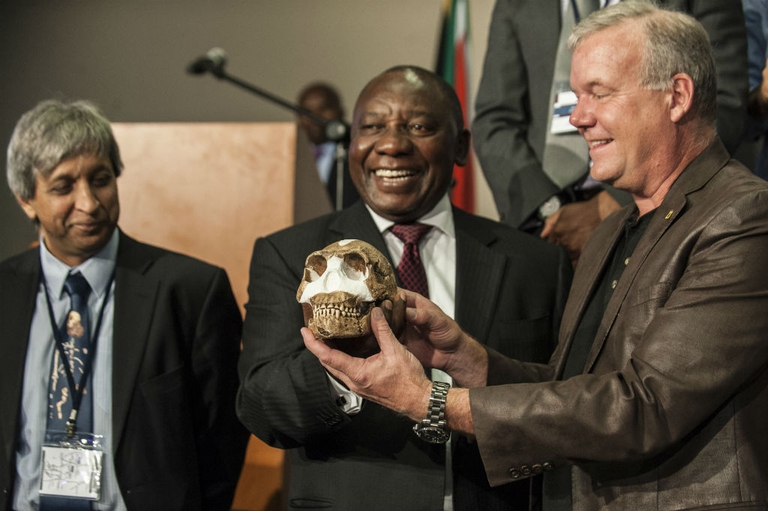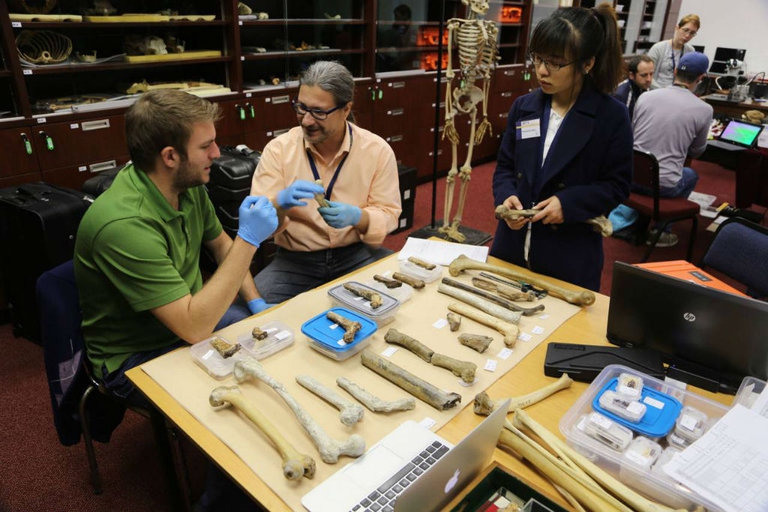
Reducing emissions means protecting our health: if unmitigated, climate change will pose increasingly severe challenges to human well-being.
Una scoperta destinata a lasciare il segno. Sia per il numero di reperti rinvenuti, sia perché cambia la conoscenza che avevamo sull’evoluzione dell’uomo.
The discovery made in South Africa, in the archaeological site of Marepong, will change the human history. The expedition, led by Professor Lee Berger, researcher at the Wits University of Johannesburg and funded by National Geographic, allowed to rediscover 1,500 bones belonging to about 15 individuals of what turned out to be a new species: the Homo naledi.
It is an unprecedented discovery that raised the interest of the entire scientific community. In between primate and man, this hominid is surely one of our ancestors. “The hypothesis is its placement at the basis of the genus Homo,” explains Damiano Marchi, researcher at the University of Pisa, the only Italian in the study. “This species has modern features in the cranium and limbs, as well as hands and feet, explaining the upright posture. On the contrary, fingers are curved and shoulders are primitive, which confirm an adaptation to tree climbing”. These hominids probably used to walk during the day and climb trees at night to defend themselves from predators.
The most surprising thing is the huge quantity of bones found in the cave. “Usually, only 10-15 bones are found, and they are compared to other hominids already known to science. This discovery will change the anthropologic practice. The Homo naledi’s skeleton proves the individual to be a mosaic: cranium and legs are ascribable to the Homo erectus; the shoulder seems that of a primate, whilst hands and feet are attributed to an Australopithecus.
Where do all these bones come from? Why is it a complete rarity? Researchers, by excluding the hypothesis of attacks from predators and a possible flooding that moved the bones into the cave, started to think that the Homo naledi disposed of its dead intentionally. “This changes our history, since we used to think that burial was exclusive to the Homo sapiens,” explains Marchi.
There’s more. “This is Africa’s richest site, and in the cave there are still many evidences to collect”. This demonstrates that there’s still much to discover and how archaeology and palaeontology are essential to reconstruct our species history, which is turning out to be more complex than expected. “It’s an extraordinaty discovery that changed my life”. And the human history.
Siamo anche su WhatsApp. Segui il canale ufficiale LifeGate per restare aggiornata, aggiornato sulle ultime notizie e sulle nostre attività.
![]()
Quest'opera è distribuita con Licenza Creative Commons Attribuzione - Non commerciale - Non opere derivate 4.0 Internazionale.
Reducing emissions means protecting our health: if unmitigated, climate change will pose increasingly severe challenges to human well-being.
Plastic pollution is airborne too. Microplastics are being carried across continents by the wind, as a recent study reveals.
A study indicates that the zoonotic origins of coronavirus may have been favoured by global warming’s impact on the conditions for bat habitats.
The decline in grey and humpback whales in the Pacific and Atlantic Oceans has been traced to food shortages caused by rising ocean temperatures.
Molecules that eat up plastic waste, including PET bottles, may soon become widely used as scientists leap ahead in developing new super enzymes.
A new study raises the alarm on the Great Barrier Reef: in 25 years half of its corals have been lost, mainly due to climate change.
Thousands of plant and fungi species may be at of risk extinction even before being discovered by scientists, according to a report by Kew Gardens.
Helsinki Airport has begun implementing a Covid-19 test which is both noninvasive and simple. The exceptional nurses involved are dogs.
Typhoons will become more intense as a result of global warming, but Japan must do more to prepare itself for the perfect storm.









